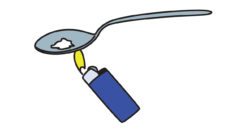Supervised injection facilities (SIFs) are increasingly being discussed in the United States as a way to reduce overdose deaths in the opioid epidemic. Here’s the third article in our week-long debate on SIFs as a harm reduction strategy. Read articles one, two and four here.
Supervised injection facilities (SIF’s) for heroin users—places where drug users can bring heroin and inject in clean, open facilities as a means to reduce infectious disease risk—have operated in Europe since the 1990’s and in North America since 2003 as a response initially to the AIDS epidemic. As the opioid crisis grows—the overdose rate now surpasses car crashes as the number one cause of death among youth in the U.S.—such facilities have gained attention as a harm reduction strategy as well. A discussion about creating SIFs in the United States is now underway. Questioning the value of SIFs must be part of that discussion.
The inspiration for the first proposed SIF in Massachusetts in the South End of Boston, which would be staffed/studied by a local medical/academic institution, hails from Canada: the Vancouver project Insite in Downtown Eastside (DTE) is now entering its second decade. In DTE homelessness continues to rise, trash and quality of life issues including underreported crime, theft, assault and drug dealing are common. Despite fervent claims to the contrary, but well known to locals, DTE is a hot spot for stolen goods. There are so many intoxicated persons in DTE, the Vancouver city council has even gone so far as to reduce the street speed to 30 km/hour (18 miles an hour) to protect addicts unable to demarcate the road from the sidewalk.
Like DTE, Methadone Mile appears to be a pipeline and magnet for vulnerable populations, many from out of the area.
Supporters are right on one point; the services offered by SIFs prevent people from dying inside the site itself. Beyond that, it is difficult to assess the claims of effectiveness. For example, data that are used to support the benefits of SIFs are based on mathematical modeling: assumptions about such things as needle sharing, disease transmission, overdoses and user characteristics. Mathematical modeling are representations of reality, but how close they come to describing the real thing is questionable. Other evidence in support of SIFs is based on self-report of patrons of the site, but the validity of self-report is often questionable.
Other drawbacks include changing drug trends in the neighborhood, police activity, and rumor: a recent example of rumor being one well-meaning provider who asked if I had heard of addicts tying themselves to a fire box after they used so that if they went out the alarm would be triggered.
The site of the Boston SIF experiment is slated to be the Methadone Mile area, where methadone, needle exchange, and housing services are already located. Like DTE, Methadone Mile appears to be a pipeline and magnet for vulnerable populations, many from out of the area. The mayor and others have tried to put lipstick on a pig and call this area Recovery Road. The flashing “Welcome to Hamsterdam” sign, only recently taken down by Bubbles Car Wash on Southampton Street, referred to season three of The Wire (HBO) in which viewers were introduced to an area in Baltimore where de-facto legalization of the drug trade was permitted. Some now see Methadone Mile as the same kind of neighborhood. I work in this neighborhood, and I am not in favor of adding a SIF.
I see SIFs as one of the highest forms of enabling; of essentially giving up hope on people who use IV drugs. One might even call this end of life or hospice care.
I see SIFs as one of the highest forms of enabling; of essentially giving up hope on people who use IV drugs. One might even call this end of life or hospice care. SIFs provide no motivations for the user to consider giving up his or her substance. SIFs are a departure from the original harm reduction principles, which were “to meet the person where they were at and support that part of them that wanted to live.” Is the goal of SIFs to make IV drug use safe and desirable? If so, then it is true that the “the emperor has no clothes.” In today’s harm reduction parlance we do not project our own desires and hopes on the client, hence minimal or no suggestion is made that they might want to consider a more life-enhancing goal. Avoidance of death is not a motive to quit, as evidenced by the comment “I have been narcan’d 17 times…” When consequences are removed from our actions the concept of human agency (skin in the game) evaporates. This is what has happened with the well-meaning idea of harm reduction, which has now become an ideology.
I am, however, willing to entertain alternatives to SIFs that may impact the current opioid crisis currently killing at least six people a day in Massachusetts. The idea of a van, which in and of itself will eliminate the nasty Not in My Back Yard (NIMBY) issues, would be a symbol of the crisis and could be situated once a week in multiple areas where the OD rates are high. In this van, yes, you may have an area to inject/consume safely under the watchful eye of a healthcare provider and there will also be the usual harm reduction supplies (clean works) and opportunities to test for HIV and Hepatitis C. Recovery interventions will part of the van team. Volunteers from Learn to Cope will be available to family members, People recovering from addiction will also volunteer. Access to buprenorphine, methadone, and naltrexone could become part of this outreach. The symbolism of the van is that the opioid crisis is about more than the addict: it is about the family and the community, and all must be educated, alerted and supported on the issues. Perhaps the politicians from the communities that the van visits will also show up to field questions. Maybe the local Dunkin Donuts will provide refreshments. This is a public health issue that needs interventions on multiple levels.
My personal belief is that if we stop treating addicted persons like sick animals who don’t know any better, if we keep telling them that they have no control over stopping their drug use, then they don’t and they never will.
Feature image: Homeless Hub, Substance Use & Addiction, homelesshub.ca. Used under CC BY-NC-ND 2.0.













